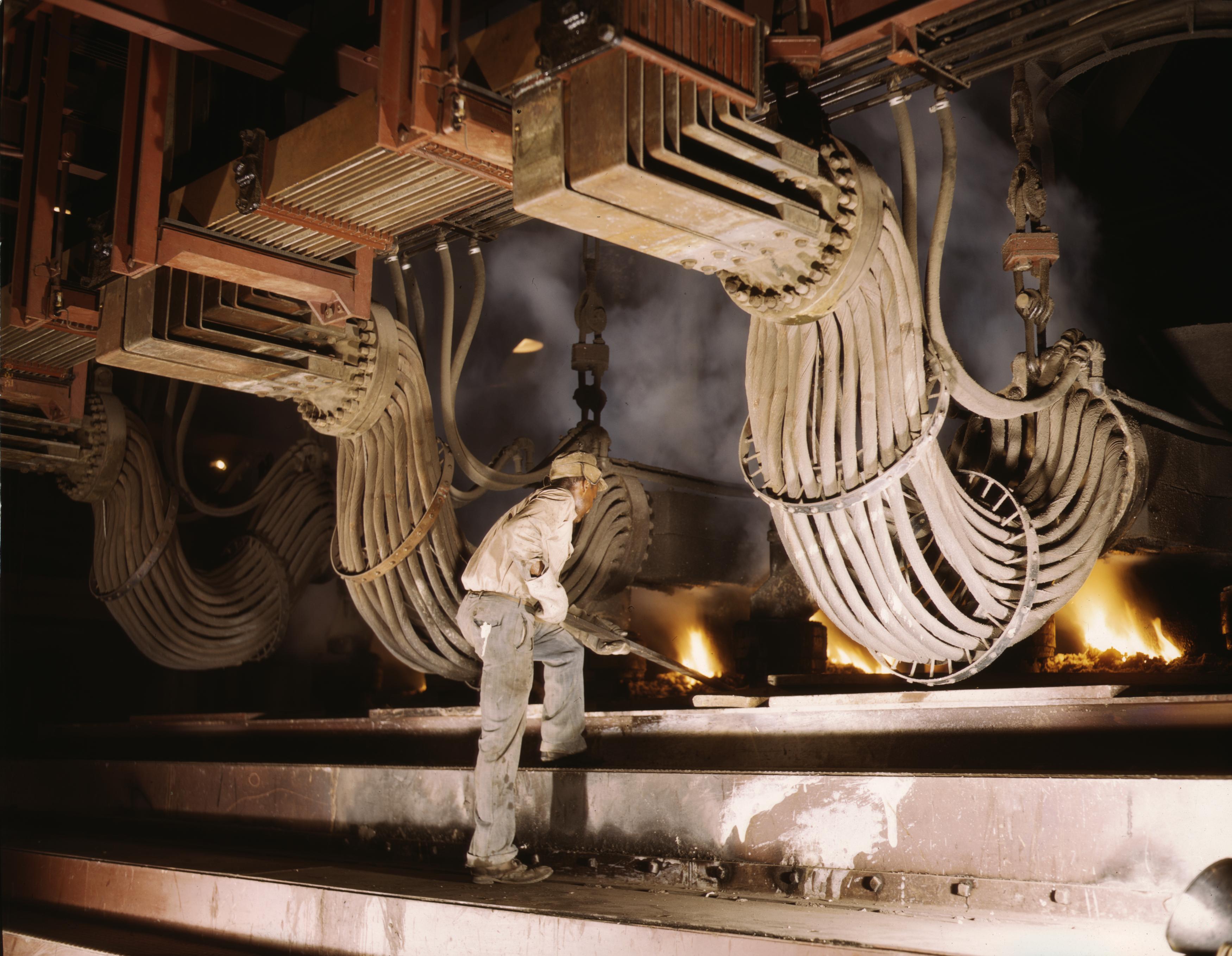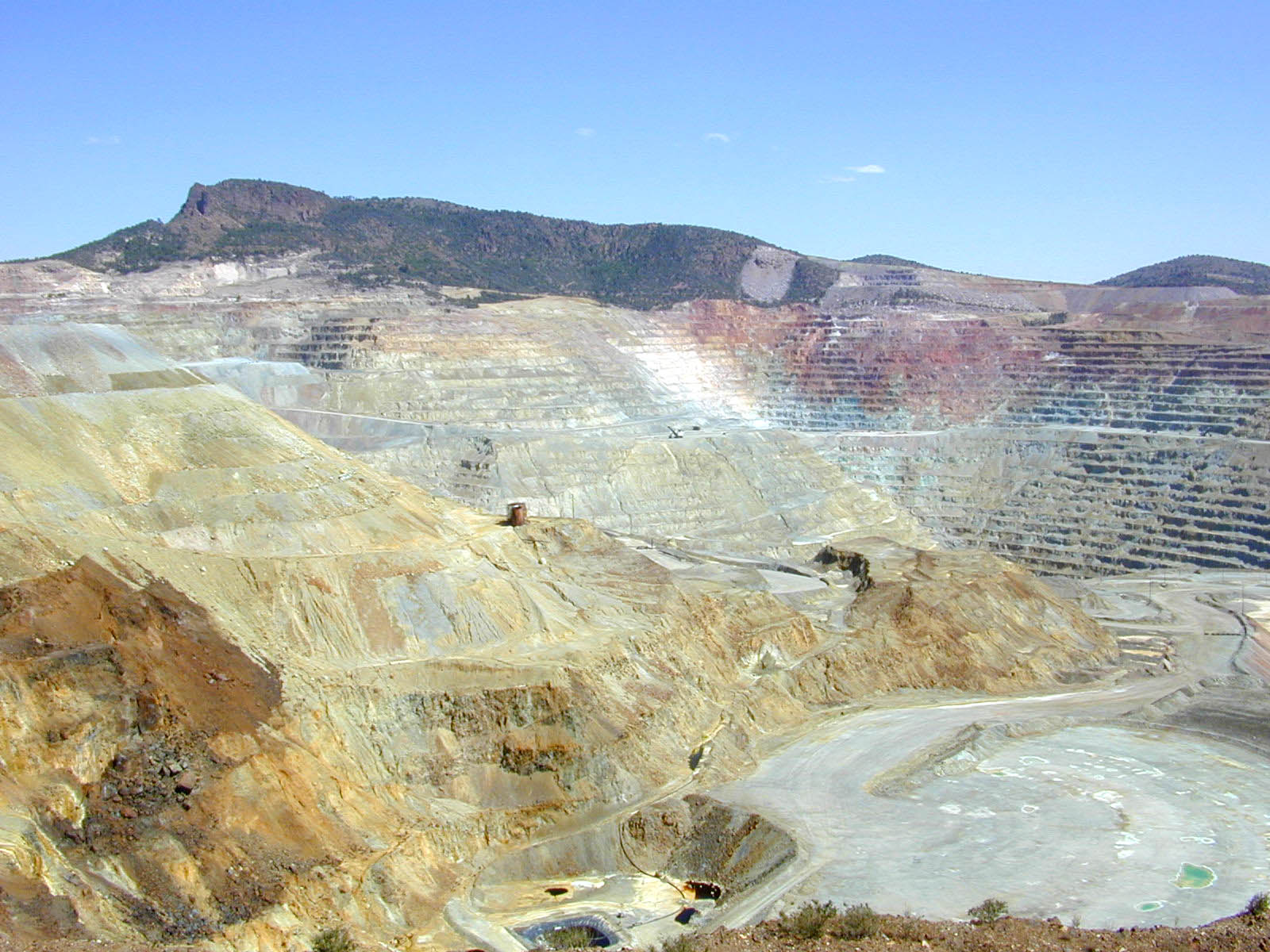|
Nampo Smelting Complex
The Namp'o Smelting Complex was a smelter in Hadaedu-dong, Hanggu-guyŏk, Namp'o Special City, North Korea. Prior to closure, it employed over 700 workers. It was a comprehensive nonferrous metal production facility including smelters for gold, copper and zinc, other metal rolling and alloy production, smelting by-products, and chemical fertiliser production. In 1997, annual production capacity was 15,000 tons of blister copper, 5,500 tons of refined copper, 7,000 tons of copper wire, 28,000 tons of zinc, and 5,000 tons of lime fertiliser. Concentrates and ores were received from the mines at Taedae-ri and Suan. The facility was served by the Korean State Railway via Tojiri on the Tojiri Line. History The Chinnampo Smelter was originally opened in stages between 1913 and 1915 as a privately owned company during the Japanese colonial era. Destroyed during the Pacific War The Pacific War, sometimes called the Asia–Pacific War or the Pacific Theatre, was the Theater (wa ... [...More Info...] [...Related Items...] OR: [Wikipedia] [Google] [Baidu] |
Smelter
Smelting is a process of applying heat and a chemical reducing agent to an ore to extract a desired base metal product. It is a form of extractive metallurgy that is used to obtain many metals such as iron, copper, silver, tin, lead and zinc. Smelting uses heat and a chemical reducing agent to decompose the ore, driving off other elements as gases or slag and leaving the metal behind. The reducing agent is commonly a fossil-fuel source of carbon, such as carbon monoxide from incomplete combustion of coke—or, in earlier times, of charcoal. The oxygen in the ore binds to carbon at high temperatures, as the chemical potential energy of the bonds in carbon dioxide () is lower than that of the bonds in the ore. Sulfide ores such as those commonly used to obtain copper, zinc or lead, are roasted before smelting in order to convert the sulfides to oxides, which are more readily reduced to the metal. Roasting heats the ore in the presence of oxygen from air, oxidizing the or ... [...More Info...] [...Related Items...] OR: [Wikipedia] [Google] [Baidu] |
Hanggu-guyok
Hanggu-guyŏk is a ''kuyŏk'' in Nampo, Namp'o Special City, South Pyongan Province, South P'yŏngan province, North Korea. Choe Thae-bok, the chairman of the Supreme People's Assembly, was born in Hanggu-guyŏk. Administrative divisions Hanggu-guyŏk is divided into 18 neighbourhoods (''Dong (administrative division), tong'') and 10 villages (''Ri (administrative division), ri''). Transportation Hanggu district is served by the Pyongnam Line, P'yŏngnam Line of the Korean State Railway. References [...More Info...] [...Related Items...] OR: [Wikipedia] [Google] [Baidu] |
Nampo
Nampo (North Korean official spelling: Nampho; ), also spelled Namp'o, is a major city in North Korea which is the country's List of cities in North Korea, fourth-largest by population. The city is an important seaport in the country as it lies on the northern shore of the Taedong River estuary, 15 km east of the estuary's mouth. Formerly known as Chinnamp'o, it was a provincial-level "Directly Governed City" ("Chikhalsi") from 1980 to 2004, and was designated a Special cities of North Korea, "Special City" ("T'ŭkpyŏlsi", 특별시; 特別市) in 2010. Nampo is approximately 50 km southwest of Pyongyang, at the mouth of the Taedong River. Since North Korean independence, the city has developed a wide range of industry and has seen significant recent redevelopment. History Before formation of North Korea The city belonged to Gojoseon until the Three Kingdoms of Korea, Three Kingdoms era, when it was taken by Goguryeo. During this time, the city was part of Sogyong ... [...More Info...] [...Related Items...] OR: [Wikipedia] [Google] [Baidu] |
North Korea
North Korea, officially the Democratic People's Republic of Korea (DPRK), is a country in East Asia. It constitutes the northern half of the Korea, Korean Peninsula and borders China and Russia to the north at the Yalu River, Yalu (Amnok) and Tumen River, Tumen rivers, and South Korea to the south at the Korean Demilitarized Zone, Korean Demilitarized Zone (DMZ). The country's western border is formed by the Yellow Sea, while its eastern border is defined by the Sea of Japan. North Korea, like South Korea, claims to be the sole legitimate government of the entire peninsula and List of islands of North Korea, adjacent islands. Pyongyang is the capital and largest city. The Korean Peninsula was first inhabited as early as the Lower Paleolithic period. Its Gojoseon, first kingdom was noted in Chinese records in the early 7th century BCE. Following the unification of the Three Kingdoms of Korea into Unified Silla, Silla and Balhae in the late 7th century, Korea was ruled by the G ... [...More Info...] [...Related Items...] OR: [Wikipedia] [Google] [Baidu] |
Gold
Gold is a chemical element; it has chemical symbol Au (from Latin ) and atomic number 79. In its pure form, it is a brightness, bright, slightly orange-yellow, dense, soft, malleable, and ductile metal. Chemically, gold is a transition metal, a group 11 element, and one of the noble metals. It is one of the least reactivity (chemistry), reactive chemical elements, being the second-lowest in the reactivity series. It is solid under standard temperature and pressure, standard conditions. Gold often occurs in free elemental (native state (metallurgy), native state), as gold nugget, nuggets or grains, in rock (geology), rocks, vein (geology), veins, and alluvial deposits. It occurs in a solid solution series with the native element silver (as in electrum), naturally alloyed with other metals like copper and palladium, and mineral inclusions such as within pyrite. Less commonly, it occurs in minerals as gold compounds, often with tellurium (gold tellurides). Gold is resistant to ... [...More Info...] [...Related Items...] OR: [Wikipedia] [Google] [Baidu] |
Copper
Copper is a chemical element; it has symbol Cu (from Latin ) and atomic number 29. It is a soft, malleable, and ductile metal with very high thermal and electrical conductivity. A freshly exposed surface of pure copper has a pinkish-orange color. Copper is used as a conductor of heat and electricity, as a building material, and as a constituent of various metal alloys, such as sterling silver used in jewelry, cupronickel used to make marine hardware and coins, and constantan used in strain gauges and thermocouples for temperature measurement. Copper is one of the few metals that can occur in nature in a directly usable, unalloyed metallic form. This means that copper is a native metal. This led to very early human use in several regions, from . Thousands of years later, it was the first metal to be smelted from sulfide ores, ; the first metal to be cast into a shape in a mold, ; and the first metal to be purposely alloyed with another metal, tin, to create bronze, ... [...More Info...] [...Related Items...] OR: [Wikipedia] [Google] [Baidu] |
Zinc
Zinc is a chemical element; it has symbol Zn and atomic number 30. It is a slightly brittle metal at room temperature and has a shiny-greyish appearance when oxidation is removed. It is the first element in group 12 (IIB) of the periodic table. In some respects, zinc is chemically similar to magnesium: both elements exhibit only one normal oxidation state (+2), and the Zn2+ and Mg2+ ions are of similar size. Zinc is the 24th most abundant element in Earth's crust and has five stable isotopes. The most common zinc ore is sphalerite (zinc blende), a zinc sulfide mineral. The largest workable lodes are in Australia, Asia, and the United States. Zinc is refined by froth flotation of the ore, roasting, and final extraction using electricity ( electrowinning). Zinc is an essential trace element for humans, animals, plants and for microorganisms and is necessary for prenatal and postnatal development. It is the second most abundant trace metal in humans after iron, an import ... [...More Info...] [...Related Items...] OR: [Wikipedia] [Google] [Baidu] |
Blister Copper
Copper extraction is the multi-stage process of obtaining copper from its ores. The conversion of copper ores consists of a series of physical, chemical, and electrochemical processes. Methods have evolved and vary with country depending on the ore source, local environmental regulations, and other factors. The copper smelters with the highest production capacity (metric tons of copper yearly) lie in China, Chile, India, Germany, Japan, Peru and Russia. China alone has over half of the world's production capacity and is also the world's largest consumer of refined copper. Precious metals and sulfuric acid are often valuable by-products of copper refining. Arsenic is the main type of impurity found in copper concentrates to enter smelting facilities. There has been an increase in arsenic in copper concentrates over the years since shallow, low-arsenic copper deposits have been progressively depleted. History Prehistory The Old Copper Complex in North America has been radiomet ... [...More Info...] [...Related Items...] OR: [Wikipedia] [Google] [Baidu] |
Korean State Railway
The Korean State Railway is the operating arm of the Ministry of Railways of North Korea (), commonly called the State Rail () and has its headquarters at Pyongyang, P'yŏngyang. The current Minister of Railways is Chang Jun-song. History 1945–1953: Liberation, partition, and the Korean War The first railways in the future territory of North Korea were built during the Korea under Japanese rule, period of Japanese rule by the Chosen Government Railway (''Sentetsu''), the South Manchuria Railway (''Mantetsu'') and private companies such as the Chosen Railway (''Chōtetsu''). At the end of the Pacific War, ( of standard gauge, and of narrow gauge) was Sentetsu owned, and ( of standard gauge and of narrow gauge) was privately owned. In September 1945 the rolling stock was 678 locomotives (124 steam locomotive, steam tank locomotive, tank, 446 tender locomotive, tender, 99 narrow gauge steam, and 8 electric locomotives), one steam-powered railway crane, 29 powered railcars ... [...More Info...] [...Related Items...] OR: [Wikipedia] [Google] [Baidu] |
Tojiri Line
The Tojiri Line is a non-electrified secondary railway line of the Korean State Railway in Namp'o Special City, North Korea, from Namp'o on the P'yŏngnam Line to Tojiri.Kokubu, Hayato, 将軍様の鉄道 (Shōgun-sama no Tetsudō) Services The line was built to serve the Namp'o Smelting Complex, which processed nonferrous metals, shipping gold, zinc, coarse and refined copper Copper is a chemical element; it has symbol Cu (from Latin ) and atomic number 29. It is a soft, malleable, and ductile metal with very high thermal and electrical conductivity. A freshly exposed surface of pure copper has a pinkish-orang ..., copper wire and chemical fertilisers. It received ore and concentrates from mines at Taedae-ri and Suan. Route A yellow background in the "Distance" box indicates that section of the line is not electrified. References Railway lines in North Korea Standard-gauge railways in North Korea {{NorthKorea-rail-transport-stub ... [...More Info...] [...Related Items...] OR: [Wikipedia] [Google] [Baidu] |
Japanese Occupation Of Korea
From 1910 to 1945, Korea was ruled by the Empire of Japan under the name Chōsen (), the Japanese reading of "Joseon". Japan first took Korea into its sphere of influence during the late 1800s. Both Korea (Joseon) and Japan had been under policies of isolationism, with Joseon being a Tributary system of China, tributary state of Qing China. However, in 1854, Perry Expedition, Japan was forcibly opened by the United States. It then rapidly modernized under the Meiji Restoration, while Joseon continued to resist foreign attempts to open it up. Japan eventually succeeded in opening Joseon with the unequal Japan–Korea Treaty of 1876. Afterwards, Japan embarked on a decades-long process of defeating its local rivals, securing alliances with Western powers, and asserting its influence in Korea. Japan Assassination of Empress Myeongseong, assassinated the defiant Korean queen and intervened in the Donghak Peasant Revolution.Donald Keene, ''Emperor of Japan: Meiji and his World, 1852� ... [...More Info...] [...Related Items...] OR: [Wikipedia] [Google] [Baidu] |





